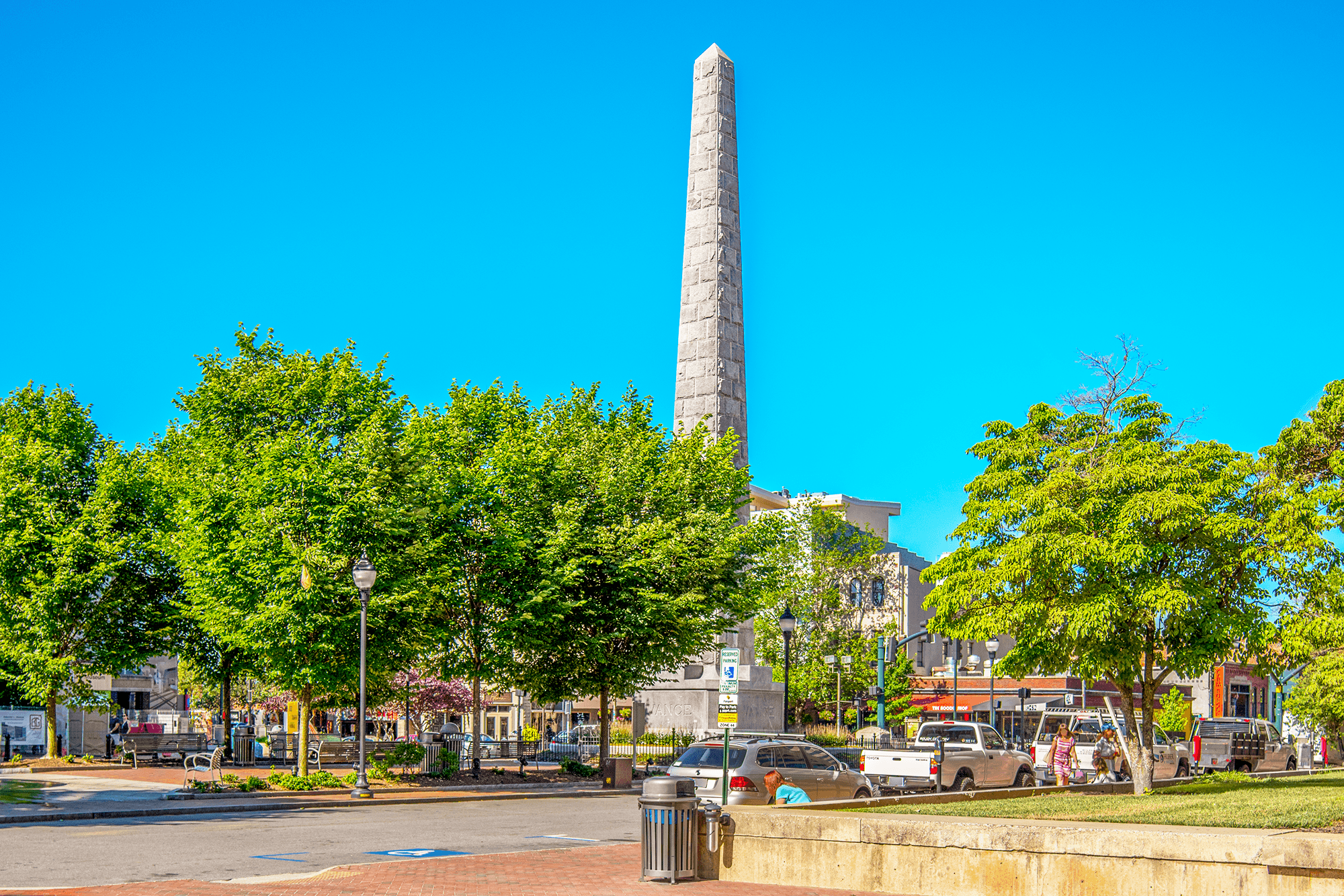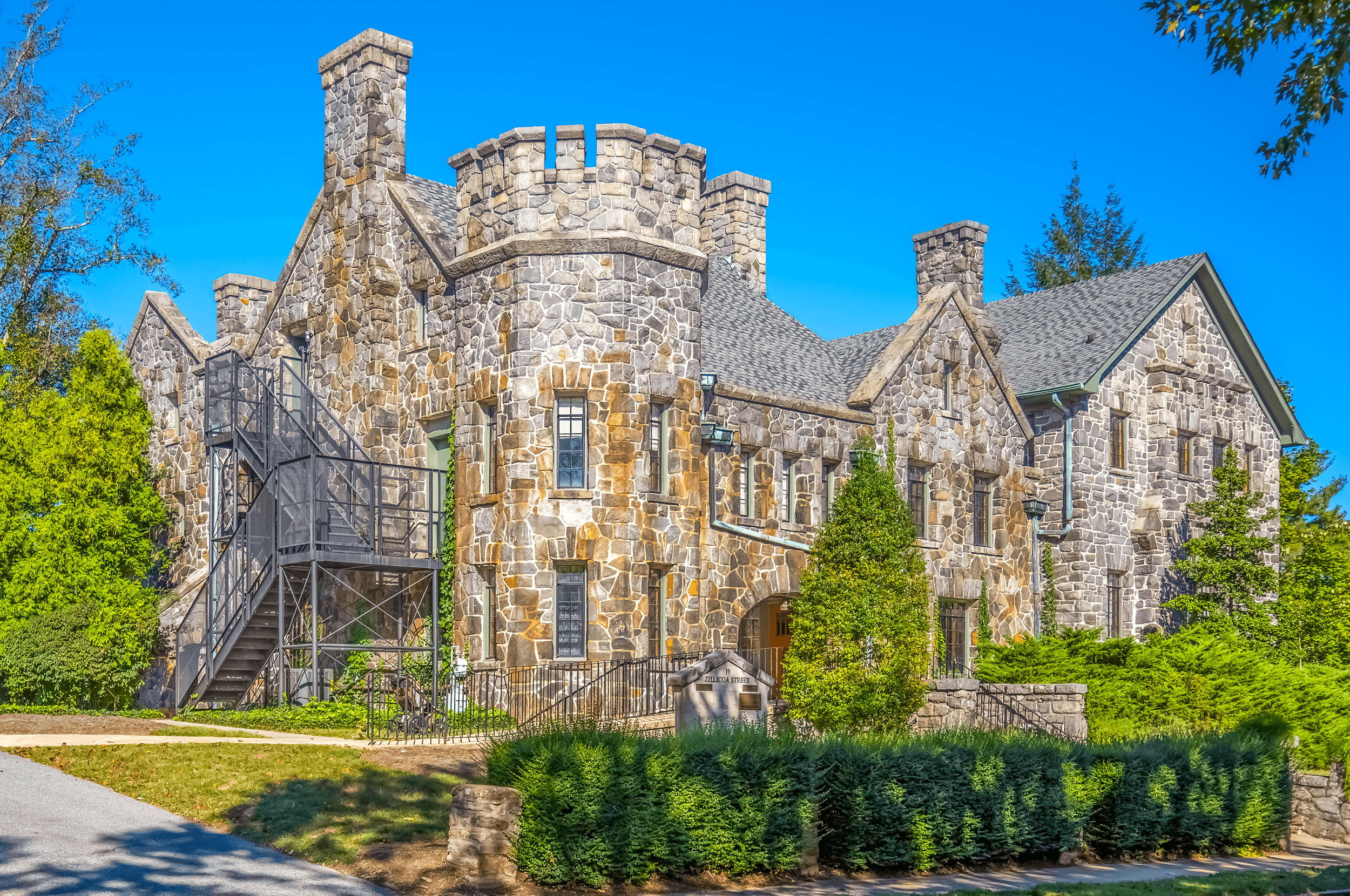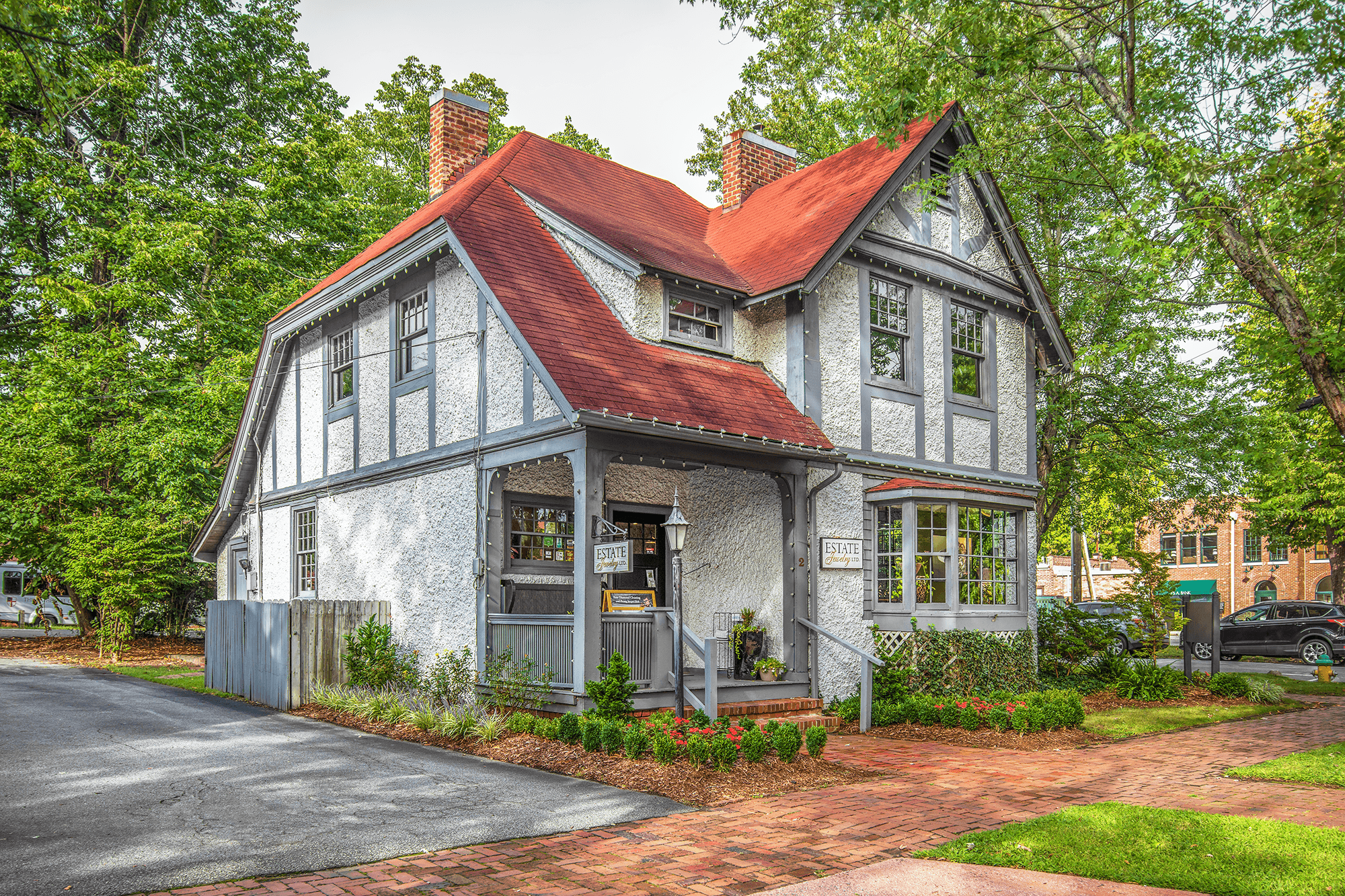Legal Building

Updated: April 2019
At the Financial Epicenter of 1930
Standing in front of the Legal Building, only a few realize that they are standing close to the financial epicenter, which worsened the effects of the Great Depression in Asheville and Buncombe County. This powerful economic earthquake wiped out public reserves and private fortunes in just a few short days in November of 1930 and brought public and private life to an abrupt standstill.
The First Tremors
It all began, when the stock market crashed in the fall of 1929, leading to many non-performing or uncollectible loans, which had been made during the roaring 1920s to foster rapid growth and expansions. The spending boom was now over, and the reduction in spending also caused the income of farmers to dwindle. Many loans were in arrears or were uncollectible, compounding an already bad situation for many banks.
However, this was not all; the worst ever recorded drought with less than half the average rainfall during the 1930-growing season impacted large parts of fifteen states. It reduced the income of many farmers even further, triggering more defaults on their loans, which in turn created more uncollectible loans for the banks, increasing their vulnerability to failure. As Elmus Wicker writes in his book “The Banking Panics of the Great Depression”, bank closures in Tennessee in November 1930 triggered bank-runs in Arkansas and Kentucky leaving those banks no other chance but to close as well. Many of these failed banks were affiliated with Caldwell and Company, which was a leading investment bank with financial interests in insurance companies, industrial companies, and newspapers. When Caldwell and Company collapsed, so did its correspondent network of financial interests.
All Lost
However, what did this have to do with Asheville? Although Caldwell and Company and the Central Bank and Trust Company of Asheville were not affiliated, they had a business relationship through reciprocal bond sales with the Bank of Tennessee, which was an affiliate of Caldwell and Company.
News about this relationship spread amongst depositors in Asheville, triggering a bank-run on the Central Bank and Trust Company, forcing its collapse just one week later. Fourteen other banks in and around Asheville also closed in the following three days. During these few days, public finances, family fortunes, and entire businesses were destroyed.
The City of Asheville lost more than $4 million when the Central Bank and Trust Company went bankrupt - and Mayor Edward Gallatin Roberts (1878-1931) was one of its board members. Six public officials, including Mayor Gallatin Roberts, and eleven bankers were charged with fraud and conspiracy of misusing city funds. As a result of the charges Gallatin Roberts resigned as mayor. In February 1931, protesting his innocence, the publicly disgraced Gallatin Roberts shot himself in a bathroom on the fourth floor of the Legal Building, the floor where the bank had its offices at that time.
Architecture
Architecturally, the Legal Building follows the Italian Renaissance Palazzo style. Built in 1909, architect Richard Sharpe Smith of Smith and Carrier used reinforced concrete for this five-story office building. It was one of the first applications of reinforced concrete construction in Asheville. The front façade consists of five bays with a clipped right corner. The protruding cornice made of sheet metal hides the elevator shafts and electric equipment on the roof when looking up from the street.
About Richard Sharpe Smith (1852-1924)
In 1852 Richard Sharpe Smith was born in Yorkshire, England. He received his architectural training in the office of his cousin George Smith. He also worked for several architects in Manchester.
In 1882 Richard Smith immigrated to the United States and started his new position with the Reid Brothers, architects, in Evansville, Indiana.
In 1883 Richard Smith moved to New York City and joined Bradford L. Gilbert’s office, where he supervised the design and construction of railroad stations.
In 1886 Richard Smith joined the office of Richard Morris Hunt working on various projects for Richard Hunt.
In 1889 Hunt assigned Richard Smith to the Biltmore Project supervising the construction of → Biltmore House and other buildings on George Vanderbilt’s estate. Richard Smith was sent to Biltmore and communicated with Richard Hunt, who remained in his New York office, through weekly progress reports and frequent letters.
Starting in 1892 George Vanderbilt asked Richard Smith to design additional buildings for him.
In 1895, the same year, when → Biltmore House was finished, Richard Hunt suddenly died, and Richard Smith became George Vanderbilt’s personal architect.
In 1896 the Vance Memorial, which Richard Smith designed, was completed.
By 1901 the first cottages in the Cottage District in Biltmore Village were built.
In 1901 Richard Smith established his private practice in fast-growing Asheville. Through his abilities as an architect and indeed through his association with George Vanderbilt, Richard Smith became one of Asheville’s leading architects, and the first, who resided permanently in the city. During this time, Richard Smith designed the Henderson County Courthouse in Hendersonville (1905) and together with Rafael Guastavino the → Basilica of Saint Lawrence (1905-1909).
In 1906 Richard Smith formed a partnership with Albert Heath Carrier, whose family had moved to Asheville in 1885, and formed the Smith and Carrier firm. Together the firm worked on more than 700 projects from its inception to Richard Smith’s death in 1924. Some of their essential works were the Legal Building (1909), the Scottish Rite Cathedral and Masonic Temple (1913), the Fraternal Order of Eagles Building (1914), the Elks Home (1915) and the Loughran Building (1923).
In 1924, Richard Smith died. He was praised by the local newspaper Asheville Citizen to have “done more than any other person to beautify the city.”
Richard Sharpe Smith is buried at the Riverside Cemetery in Asheville’s historic Montford District.
10-14 South Pack Square, Asheville, NC 28801
All day.
All year.
STREET VIEWING ONLY.
Private property.
Pack Square Parking Garage.
Public bus stop: Patton Ave at Biltmore Ave.
Stop Gray Line Historic Trolley: Pack Square.









